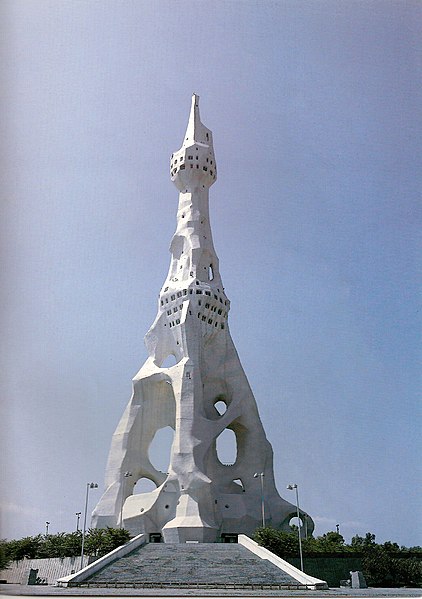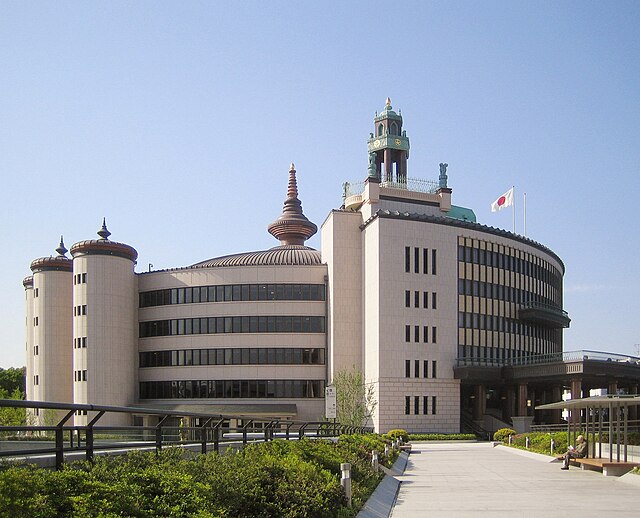Tenrikyo is a Japanese new religion which is neither strictly monotheistic nor pantheistic, originating from the teachings of a 19th-century woman named Nakayama Miki, known to her followers as "Oyasama". Followers of Tenrikyo believe that God of Origin, God in Truth, known by several names including "Tsukihi," "Tenri-Ō-no-Mikoto" and "Oyagamisama " revealed divine intent through Miki Nakayama as the Shrine of God and to a lesser extent the roles of the Honseki Izo Iburi and other leaders. Tenrikyo's worldly aim is to teach and promote the Joyous Life, which is cultivated through acts of charity and mindfulness called hinokishin.
Tenrikyo Church Headquarters, Tenri, Nara
Instruments used to perform Otsutome
Tenrikyo service performers wearing traditional montsuki kimono after a monthly service.
A Yoboku administering the Sazuke on a follower.
Japanese new religions are new religious movements established in Japan. In Japanese, they are called shinshūkyō (新宗教) or shinkō shūkyō (新興宗教). Japanese scholars classify all religious organizations founded since the middle of the 19th century as "new religions"; thus, the term refers to a great diversity and number of organizations. Most came into being in the mid-to-late twentieth century and are influenced by much older traditional religions including Buddhism and Shinto. Foreign influences include Christianity, the Bible, and the writings of Nostradamus.
The Dai Heiwa Kinen Tō, Peace Tower built by Perfect Liberty Kyōdan
Head office of Oomoto at Kameoka, Japan
Headquarters of Reiyū-kai
Rissho Kosei-kai’s Great Sacred Hall








